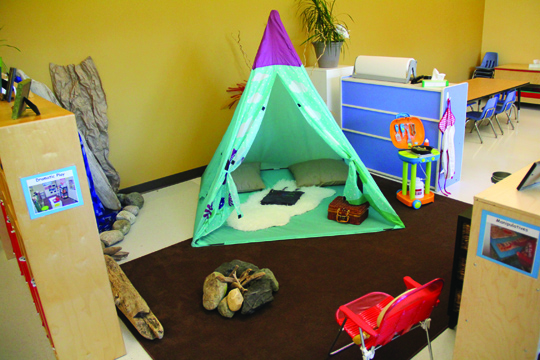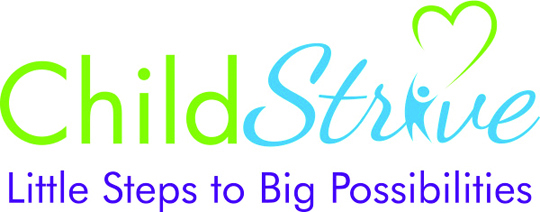Category: Tulalip News
August 19, 2015 syəcəb
Back to School Extravaganza, Sept 2
Tulalip Tribal Chairman addresses illegally harvested shellfish at Tulalip
Tulalip,
I want to address a subject that weighs heavy on our community right now; the buzz currently in the media regarding Tulalip citizens accused of trafficking in illegally harvested shellfish.
Every citizen has a right to a fair and impartial trial, and the Tulalip Tribes protects our citizens’ rights by refraining from speaking about current investigations. Facts about the case will be available after the case goes to trial and a judgment is made.
The State did recognize our jurisdiction. The State went through Tulalip Court to obtain search warrants for an investigation that involved Tulalip citizens. The State recognizes both our interest in this case, as well as the authority of our judicial system.
Tulalip has jurisdiction over all fishing violations committed by Tribal fishermen within our usual and accustomed areas. The Boldt Decision reaffirmed that inherent right, and Tulalip is exercising that right by prosecuting 8 different cases of fishing in closed waters, not just the case that you’ve seen in the media. The State has not filed any charges to date.
We exercise our sovereignty by creating and enforcing our laws. Laws that apply to every citizen, and laws that were created for the benefit of every citizen. Just as our ancestors did, we use our knowledge of the resource to determine when to open fisheries so that our people can enjoy that resource, while leaving enough to ensure the future of the resource.
Regardless of whether it was harvested legally or illegally, for subsistence, financial or personal gain, every bit of our natural resources harvested by Tulalip citizens are counted as part of 50% of the catch that tribes are entitled to. Every fish that is taken illegally, is taken from the mouths of other Tulalips.
The Tulalip Tribes will prosecute Tulalip citizens who take from our families. We will prosecute crimes that endanger the co-management of our resource. We will exercise our sovereignty and enforce the laws that we created to protect our people.
I’m encouraged by all of the conversation. I’m gratified to know that our citizens are as engaged in protecting our sovereignty as our grandparents were.
Mel Sheldon
Chairman, Tulalip Tribes
A dream come true for ‘Children of the Salmon’
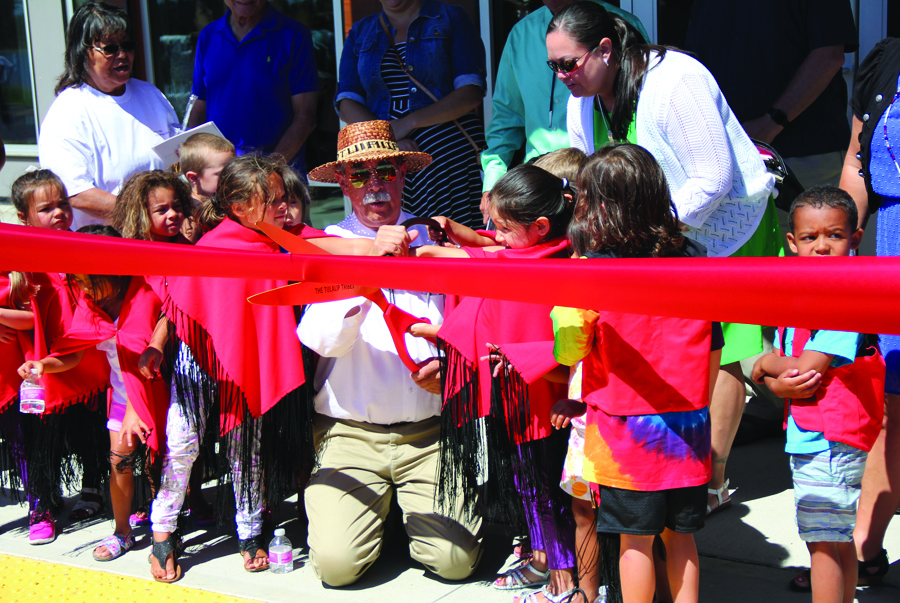
Photo/MIcheal Rios
By Micheal Rios, Tulalip News
On Friday, August 7, the much anticipated grand opening was held for the Betty J. Taylor Early Learning Academy. The event marked the culmination of over a decade’s worth of planning, devotion, and perseverance by countless individuals committed to helping local community families make a lasting, positive difference in their children’s education. In partnership with parents and community, the caring and experienced Tulalip Tribes teaching staff created a loving and safe environment where children and families can grow in academically. The Betty J. Taylor Early Learning Academy (ELA) provides no cost educational schooling from 9:00 a.m. – 3:00 p.m. Monday through Thursday for children ages birth to 5 years-old.
“In 1999, Les Parks and I took a very transformative trip to Philadelphia to look at a learning academy,” recalls Mel Sheldon, Tulalip Chairman. “We think about education and what it means to our kids, what it means to our community, and how we create safe environments for learning. I look at this building and I see nothing but good vibrations and endless possibilities for our young ones. What a great site for the school here. Our youth are going to have memories that will go long into their life with their teachers, their parents, and all the learning that they’ll be doing.”
A large community attendance, along with representatives of Marysville School District and Washington, D.C. dignitaries, turned out to witness the debut of the gorgeous 52,000 square-foot Early Learning Academy. The facility, oriented towards views over Tulalip Bay and the surrounding woodlands, sits on nine acres of land and is designed to symbolize the tribe’s commitment to a healthy community and a strong foundation for our children’s education. Tribal artists worked with the project team to incorporate artwork on the site and within public spaces of the building to reflect the cultural context being infused into our idea of early learning. Tulalip artwork is clearly visible in the stunning, etched-glass panels provided by James Madison, the blue glass wave directly above the reception area, and the river designed walkway throughout the academy.
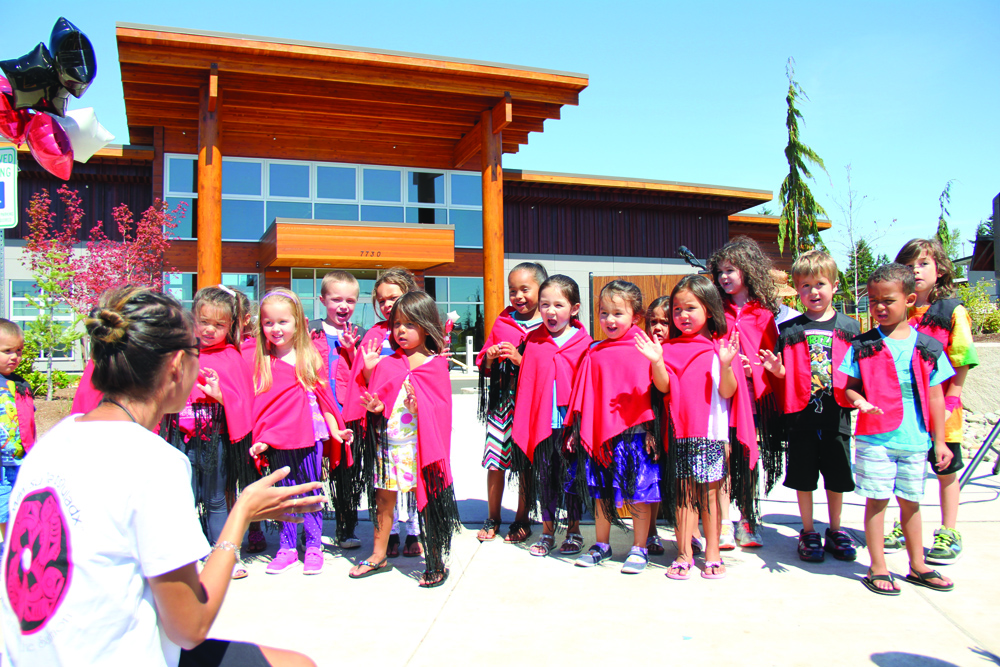
Photo/Micheal Rios
“To me, this day has been 17 years in the making. It’s been a dream that we’ve all had,” details Les Park, Tulalip Board of Director, to the hundreds of attendees. “Research tells us that 90% of a child’s brain development happens before age five. Ever so true that is, our kids are capable and eager to learn at a very early age. We’ve known this and in response have created several different programs that touch on early learning, but this is the building where we are going to take it to a new and higher level, which I think is going to change our membership in the future. A generation from now, when these kids have grown up and are leading our tribe, they would have learned so much more than they would have, had they just waited to enter the public school system. It’s so exciting for me to witness this, a 17 year vision come to fruition today as we bring an early learning academy to Tulalip.”
Far too many children enter public school kindergarten unprepared for the drastic changes in routine and academic expectations. When children begin school unprepared it’s only a matter of time before they fall behind, and they tend to fall further behind as the school year progresses. All children need to enter school ready and able to succeed, which is why early education is so important. Cognitively, early education improves school performance, raises math and language abilities, and sharpens thinking and attention skills. Early learning also has plenty of social and emotional benefits as well. Children will improve and strengthen their interactions with peers, decrease problem behaviors, and helps adjustment to the demands of formal education.
With the opening of the Early Learning Academy, we fully expect all the added benefits and rewards of early learning to materialize for our children. However, those aren’t the only benefits of the ELA, as many new and exciting changes will be instituted to the way Tulalip will approach educating our young children. One such change is the moniker of the students who will attend the ELA, who will be affectionately known as the ‘Children of the Salmon’. The foremost game changer is the consolidation of all birth to five-year-old programs into one program, under one roof.
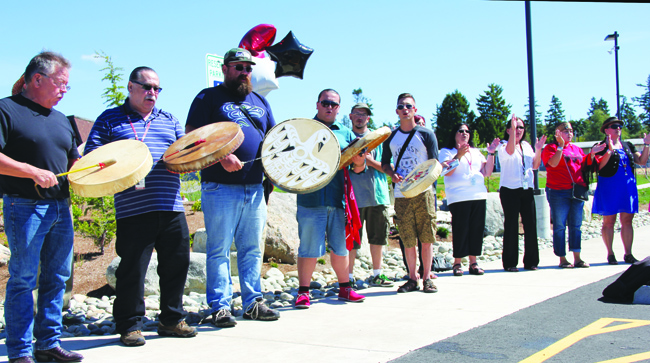
“We have brought all our birth to five programs out of their silos and brought them together into one, singular program with the same focus,” explains Sheryl Fryberg, ELA Manager. “We’ve redone all of our policies, procedures, and intake forms to reflect this. We are now the Betty J. Taylor Early Learning Academy. We’re not Montessori, we’re not ECEAP, and we’re not Early Head-Start; we are one.
“This academy is open to all of our tribal kids. In addition to our tribal kids, our service area is Marysville School District, so if your family is within the Marysville School District then your eligible to apply here.”
ELA will be using the Creative Curriculum, but utilizing different strategies. Teaching staff will utilize the Teaching Strategies assessment tools to show the progress that all of our children are making. This curriculum assures that the academy remains aligned with the school readiness early learning content standards, while doubling as a means to provide constant feedback on students’ progress.
“We will be utilizing a new child evaluation system, so that we can keep track of where our kids are with their learning,” explains Sheryl Fryberg. “Assessments that all our teachers will be using from birth to five will measure our students’ growth in different areas and stages. This process will make it possible for us to create custom and, if need be, individualized lesson plans from the assessment results to ensure we don’t allow any children to lag behind or fall into the gaps. Our top priority is to provide the best educational foundation as possible for each and every ELA student.”
Another big change, that undoubtedly will take some time for parents and students to adjust to, is the switch to a year-around school system. There will be no 2.5 month long summer break for students of the Early Learning Academy, instead there will be four school closures throughout the year. A one-week break will occur in December, April and June, while a two-week break is expected in August.
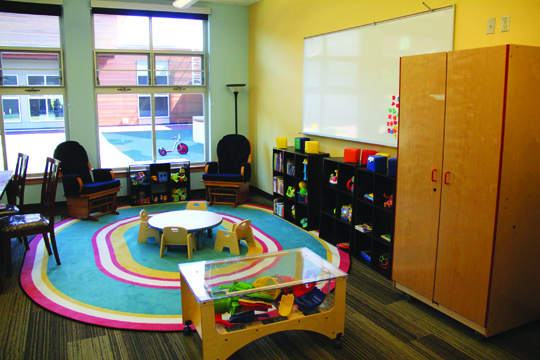
Photo/Micheal Rios
“Research shows that when you do year-around schooling the children do much better academically, and what better time to have them transition to year-around school then while they are getting adjusted to the Early Learning Academy,” continues Fryberg. “I feel like we are laying such a strong foundation for our kids and the families to be involved in their kids’ education. The research has shown that when kids are off school for 2.5 months that they lose so much of what they’ve learned. You’re almost starting all over when they come back to school in the fall, so this move to year-around education will be such a huge benefit to the future academic success of our children.”
The academic success of our children is at the forefront of every idea and strategy that will be implemented in the ELA’s curriculum. The cultural tie-ins will remain and even be pushed to new limits, especially when it comes to teaching and learning the Tulalip language, Lushootseed.
“We’re working with the Lushootseed department to develop an immersion classroom,” says Fryberg. “We haven’t worked out all the details just yet, but for 18-months to 3 years-old we want one classroom for three hours a day, all the children do is speak and hear our Lushootseed language. Then we want to follow that group up, continuing to offer them Lushootseed immersion, and see what the end results are. If it’s successful, then we can find grants to really grow a Lushootseed immersion program.”
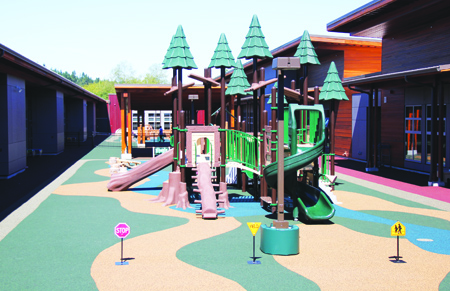
Photo/Micheal Rios
One vision leads to another. As the ELA opens its doors to the children of our community and promises long-term positive results, one can’t help wonder what the future holds for the cohorts of birth to 5 year-olds whose education and future academic prospects just got a whole lot brighter. Time will determine just how big an impact the ELA’s foundation will have on the tribe’s future, but for now let us just appreciate all the people and effort that made the ELA possible.
“There were so many people involved, who came together as a team to make this vision a reality,” proclaims Misty Napeahi, General Manager of the Tulalip Tribes. “It’s not easy when we’ve had separate programs run as individual programs with different teaching models for all these years. We know the commitment to the children will supersede all obstacles and that our teaching staff will all be working together to serve our children. It couldn’t be done in a better facility. This building is absolutely gorgeous. This dream came true because of all the hard work of our maintenance and construction teams, our teaching staff, and all those who were involved behind the scenes. Because of you all, our children will be here for years to come.”
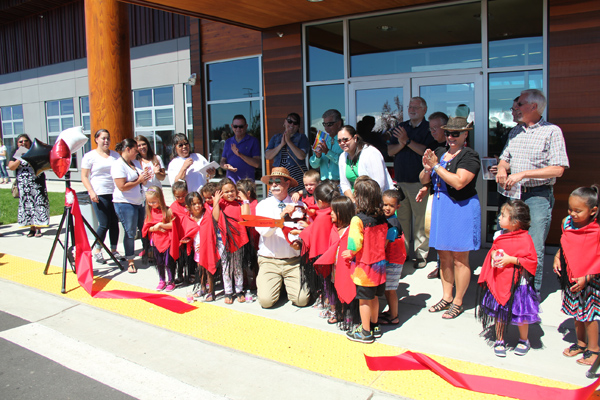
Probation provides a bridge between court and clients
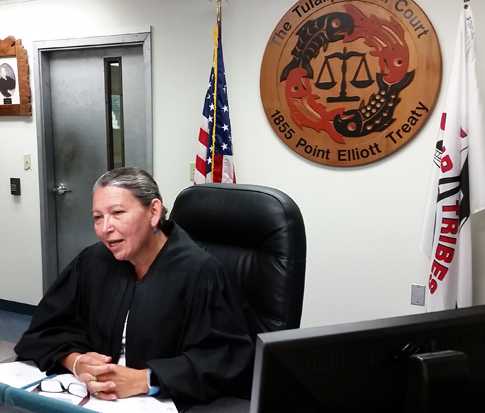
said Tulalip Chief Judge Theresa Pouley
Photo/ Niki Cleary
By Brandi N. Montreuil and Niki Cleary, Tulalip News
The Tulalip Tribes Probation Department is an integral component to Tulalip Tribal Court. A kind of cross between a counselor, cheerleader, champion and hall monitor, the probation staff are a bridge between the court and the client.
“I like to think that orders of the court are geared towards helping people make better choices and probation is the arm that helps them understand what they’re required to do,” explained Tulalip Chief Judge Theresa Pouley. “When you are found guilty of a crime the court is going to give you a list of requirements. We can trust that you’re going to do it, or someone can help monitor whether you comply and help you problem solve ways to be in compliance.
“The Probation Officer receives a copy of the judgment and sentence, which lists all of the things the client has to do. Probation also informs the court when they aren’t doing what they’re supposed to do.”
Tulalip Associate Judge Ron Whitener followed up, “They also advocate for their clients with us [the judges] because they know the true circumstances of their lives. Even though someone might be out of compliance, probation might say we want to come up with a plan to stay in compliance.”
Probation is a complex concept and the reasons that a client receives probation are as varied as the reasons that bring clients into the court. Probation can be a way to give clients a chance to make good without jail time or other sanctions. It can be a way to transition clients back to the community more successfully. Or it can be a way to keep in touch with those at high risk of re-offending, so they don’t simply do their time and slip quietly back into the community to carry on with their former criminal activities.
Judge Pouley gave an example of a non-violent offense that might receive probation, “For a class E offense, possession of a controlled substance there is a maximum penalty of 365 days of jail and a $5,000 fine. It doesn’t do anyone any good to put a first time offender in jail for 365 days and charge them $5,000. If they’re a first time offender, you really want to figure out how to get them treatment. For someone with substance abuse issues, it’s not always easy to make good on your promises [to get treatment], probation helps them do that.”
Judge Whitener described how the relationship between a client and the probation officer can provide positive peer pressure that encourages clients to succeed.
“People, especially with substance abuse, need that structure. The knowledge that they have a person who is going to check on them, knowing that tomorrow I have to go talk to [my probation officer] and he’s going to know, from my chemical dependency counselor, whether I’m going to my sessions. He’ll know if I paid my fine. That makes it easier for the short term.”
Judge Whitener continued, describing probation as a tool to do what is best for the community and the client.
“It’s a system of harm reduction and rehabilitation,” he said. “You want to rehabilitate [the client] and you want to reduce harm to the community. You could put them in jail, but it would be a huge cost. You really want to find out what is going to work for the individual and that’s what probation does. They get to know their clients. They do an assessment of individuals and come forward with a tailored plan for what is going to have the best likelihood of success.”
He described probation as a form of cognitive behavioral therapy, “You rewire the brain towards the positive way of living, rather than the negative. You’re reinforcing a positive lifestyle, you are also being consistent and you have sanctions [when a client doesn’t follow through].
“There’s no magic pill that can solve the problem. It takes lots of hands and some time,” he continued. “It takes a lot of work, sometimes it takes multiple criminal charges and a few times on probation. And sometimes it never happens. We always want there to be a solution. We have to accept that for a lot of people, their lives get better, for some people it doesn’t.”
For violent offenders or those at high risk of reoffending, Judge Pouley explained that sometimes the ratio of sentencing and probation is a balance between holding the offender accountable for their actions, and having an avenue to regulate their actions once they’ve served their time and/or paid their restitution.
“For the vast majority of our clients, we view our role as encouraging people to make good choices and discouraging bad choices. However, there are a small percentage of the clients that are a danger of the community,” she said.
“Most people in that category do up-front jail time as a sanction,” Judge Pouley explained. “But putting someone in jail for 365 days and then on day 366 having no supervision whatsoever isn’t always the best. You want to the sanction to show that you’re serious about not hurting people, selling drugs or being a sex offender, but at the same time you want some supervision afterwards to monitor them for the safety of the community. You want to make sure they’re taking the classes they’re supposed to be taking, but also staying away from the areas they’re supposed to stay away from.”
“We love what we do and we’re trying to help people make better choices,” Judge Pouley recapped. “When it works, it’s such a fabulous thing. And when it doesn’t, it’s pretty heartbreaking.”
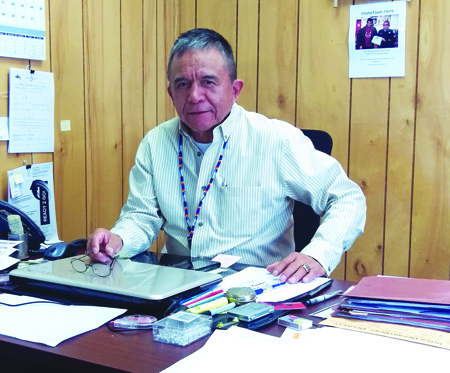
Photo/Brandi N. Montreuil
Both judges expect that changes in the probation officer may make probation an even more effective tool for clients. For the first time ever, a Tulalip citizen is serving as the probation officer. Tulalip tribal member Andy James is replacing longstanding Probation Officer Jim Furchert. Andy brings with him not only his skills as a United States Marine, but also fourteen years of experience as a Tulalip police officer and he’s already a staple in the courtroom where he’s served as the Transport Officer and Court Bailiff. Known for his fatherly advice and strong cultural teachings, Andy is a natural fit.
“Of the great things about Andy is that he used to do this as Transport Officer,” Judge Pouley described. “He’d give words of wisdom like any elder in your family might give. We’re pretty excited to have Andy and his experience change the dynamic in Probation. He has a really vested interest in the community. He knows the clients and families and brings that depth of knowledge and law enforcement experience to the probation officer job.”
Judge Whitener agreed, pointing out that Andy’s standing in the community will help make the Probation Office more relevant.
“The one thing Probation hasn’t had is the voice of an elder that’s familiar with the community,” he said. “For our clients, someone like that telling them what they need to do resonates more than someone who doesn’t have the same status in the community. It’s a great thing to have his perspective.”
Andy already plans to incorporate culture and tradition as a way to empower clients. He hopes the integration of traditional culture will help break down the institutionalized feeling that many clients have about probation.
“Before, I only had parts of the puzzle,” explained Andy, describing his former role as court bailiff. “Now I have to go through all the client files and make recommendations. I have the whole puzzle to work with now.”
Andy has always used his time with clients to encourage them to comply with court orders and become involved with their culture as a way to heal.
“In some ways it’s identical,” said Andy, comparing previous work with Tulalip Police to his new position as probation officer. “I am dealing with someone’s life.”
As probation officer, Andy is responsible for monitoring over 180 clients, with the assistance of two additional staff members. He has to provide sentencing recommendations, not only in Tulalip Tribal Court, but also state, federal and other tribal courts. The Probation Department coordinates with a variety of tribal entities including the Tulalip Central Drug and Alcohol Testing Department, Behavioral Health Services, and various State and Federal probation and correction departments.
Andy will spend the next few months orientating himself with each client file and new probation software.
“This is a hard job,” said Andy. “I am not perfect and I stress that to clients. I will treat them with respect and let them know we all make a difference, and we all have a purpose.”
Tulalip Hip Hop Artist Komplex Kai in ‘Don’t Funk Up Our Beats’ Contest
Komplex Kai, a Native Emcee from Tulalip, is part of the “Don’t Funk Up Our Beats” contest from HipHopDX and Funk Volume. Check out his video featuring the song, The First, from his 2010 album Mask’d Dreamz.
You have until August 23 to visit hiphopdx.com and cast your vote. Contestants need 250 votes to eligible to be selected as a finalist, so spread the word and listen to his beats.
Additional Komplex Kai videos can be found on YouTube and you can follow him on Facebook.
August 12, 2015 syəcəb
gʷədᶻadad: teaching of one’s ancestors
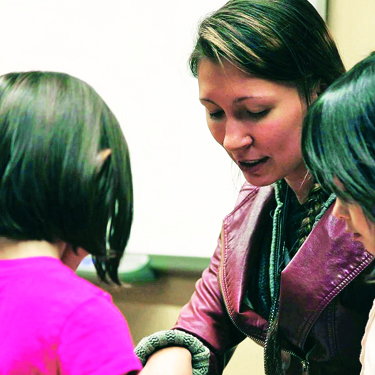
Lushootseed.

By Micheal Rios, Tulalip News
At this year’s closing ceremony for the 20th Annual Lushootseed Day Camp, Maria Martin, better known as Miss Maria to the Tulalip young ones, was acknowledged for being an inaugural participant at the first-ever Lushootseed camp in 1996. Fast forward 20 years to the present and Miss Maria has come full-circle, now a Lushootseed teacher and instructor for the 2015 rendition of the language camp.
“It’s such a special feeling knowing we are now celebrating our 20th year of language camp. During this year’s camp we had a lot of first time attendees, they are only five-years old, and we were able to talk to them about how Miss Maria started out being at the very first language camp 20 years ago,” says Natosha Gobin, a fellow Lushootseed Teacher and instructor at the annual language camp. “She was one of our very first camp attendees and here she is now as one of our Lushootseed teachers. We wanted to pass this message onto our kids because it’s pretty amazing.
“Through her work, which is of a humble heart, Miss Maria continues to inspire our next generation to continue learning, speaking, and being the amazing little language warriors that they are. We are so grateful for her.”
Miss Maria has only fond memories of the early years of language camp that unknowingly shaped her future.
“Lushootseed language camp has been a part of my life for years. It’s a reunion of friends, family and history,” says Maria. “You get to attend a summer time camp where you’re able to be reunited with people you may not normally see and have fun together. You get to learn things that aren’t offered just anywhere. It was a place I got to learn about my people and through that learned who I wanted to be.
“The people at camp, the volunteers, the Lushootseed staff, my family and friends, they all definitely impacted my decision to be a Lushootseed teacher. I feel I learned important life lessons, as well as my cultural values, in a way that I could understand them as a child. It makes me so happy to be a part of the Lushootseed department today. I couldn’t ask for a better job. It’s amazing to come full circle. I get the opportunity to be the kind of teacher who inspired me and taught me our culture. Ideally, I get to reciprocate the actions of all the teachers who have made me who I am today. Now, I get to inspire.”
As the participants, teachers, and even the format of language has changed so has Miss Maria, but her goals will always remain the same.
“I love camp. I always have. Whatever changes have come or whatever changes will come, I’ll always be ready and looking forward to another amazing year. We take the good from camp and leave behind the bad. Just keep making it a wonderful experience, that’s my goal.”
Play time for infants and toddlers
Submitted by Kathleen Lefcourt, ChildStrive
Playtime is special. As a parent or caregiver, your child loves to play with you – you are their favorite toy! From the very beginning of a child’s life they are watching your face as you feed or bathe them, and listening to your voice as you diaper or dress them. Any activity can be playful for a young child, even a simple task like sorting socks can bring smiles and giggles.
Playing is a child’s “work.” Watch your child at play and you will see concentration, passion and creative excitement that will stay with your child throughout his or her life. Anytime a child is engaged in having fun, learning is taking place.
Here are a few ideas that will engage a young child and help their intellectual, social, emotional and physical development.
Utilize musical instruments. Whether you have actual instruments or improvise with spoons, a plastic jug for a drum, or strike blocks together, these tools help your child interact with you and may have an added benefit of teaching rhythm.
Sing fingers songs like “Itsy Bitsy Spider”, “Wheels on the Bus” or one of your favorite childhood songs that involves hand motions. It doesn’t matter how your voice sounds, your child will love to hear you sing and will enjoy the interaction.
Read books together. Point out animals, shapes or people, and label them with names. This encourages your child to grow vocabulary and get a sense of how the world works around them.
Blow bubbles. Whether your child can blow bubbles on their own, or you have to do it for them, bubbles are a great way to encourage eye contact, develop motor skills and can motivate shy kids to communicate.
Encourage imagination. Pretend your feeding dolls, driving cars or trains, hammering nails, or stirring food. Your child will teach you what they are most interested in and you can build on their ideas.
Enjoy this important time in the life of your child!
ChildStrive (formerly known as Little Red School House) has been partnering with Tulalip families for more than 30 years. For more information about your child’s childhood development contact Courtney Miller at ChildStrive at (425) 353-5656 x7145 or Courtney.Miller@ChildStrive.org. More information about ChildStrive can be found on our website at www.ChildStrive.org








